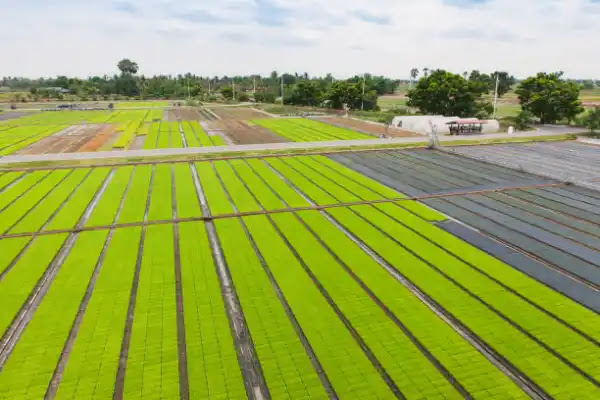Featured
- Get link
- X
- Other Apps
Building Resilience in Farming Communities
Trickle Irrigation: Farming Communities
Introduction
Trickle irrigation, also known as drip irrigation, has
emerged as a powerful tool for building resilience in farming communities
worldwide. This innovative irrigation method delivers water directly to the
root zone of plants, maximizing efficiency and minimizing water wastage. In the
face of increasing climate variability, water scarcity, and environmental
degradation, trickle irrigation offers a sustainable solution to enhance
agricultural productivity, conserve water resources, and promote resilience in
farming communities. In this article, we explore how trickle irrigation
contributes to resilience building in farming communities and its implications
for sustainable development.
Enhancing Agricultural Productivity
Trickle irrigation plays a crucial role in enhancing
agricultural productivity by providing crops with the precise amount of water
they need for optimal growth and yield. Unlike traditional flood irrigation
methods, which can lead to water wastage, soil erosion, and nutrient runoff,
drip irrigation minimizes these risks by delivering water directly to the root
zone of plants. This precision watering not only conserves water but also
reduces the incidence of water-related stress, diseases, and pests, resulting
in healthier crops and higher yields.
Moreover, trickle irrigation allows for the precise
application of fertilizers and other agrochemicals, further enhancing crop
growth and minimizing environmental impacts. By delivering nutrients directly
to the root zone, drip irrigation reduces nutrient leaching and pollution of
water bodies, preserving soil fertility and promoting sustainable agriculture
practices.
Conserving Water
Resources: Water scarcity is a growing concern in many farming communities,
exacerbated by climate change, population growth, and competing demands for
water resources. Trickle irrigation offers a solution to this challenge by
maximizing water efficiency and minimizing wastage. By delivering water
directly to the root zone of plants, drip irrigation reduces evaporation,
runoff, and deep percolation, conserving water resources and ensuring a
reliable water supply for agriculture.
Studies have shown that trickle irrigation can reduce water
consumption by up to 50% compared to conventional irrigation methods, making it
particularly well-suited for regions facing water scarcity. By optimizing water
use and minimizing losses, drip irrigation helps farming communities cope with
water shortages, mitigate the impacts of drought, and adapt to changing
climatic conditions.
Promoting Resilience:
Resilience is the ability of farming communities to withstand and recover
from shocks and stresses while maintaining their core functions, livelihoods,
and well-being. Trickle irrigation contributes to resilience building in
farming communities by enhancing agricultural productivity, conserving water
resources, and promoting sustainable livelihoods.
One key aspect of resilience is diversification, which
enables farming communities to spread risks and reduce vulnerability to
external shocks. Trickle irrigation facilitates diversification by allowing
farmers to grow a wider range of crops and cultivate marginal lands that may be
unsuitable for traditional irrigation methods. This diversification not only
enhances food security but also increases income opportunities and reduces
dependence on a single crop or source of income.
Furthermore, trickle irrigation enables farming communities
to adapt to changing environmental conditions and mitigate the impacts of
climate change. By conserving water resources and optimizing water use, drip
irrigation helps farmers cope with water scarcity, erratic rainfall patterns,
and extreme weather events such as droughts and floods. Additionally, the
precision and efficiency of drip irrigation reduce the need for chemical inputs
and mitigate environmental degradation, enhancing the long-term resilience of
farming systems.
Building Social
Capital and Community Networks: Trickle irrigation fosters social capital
and community networks by bringing farmers together to share knowledge,
resources, and experiences. Drip irrigation projects often involve
collaboration between farmers, local authorities, development agencies, and
other stakeholders, creating opportunities for collective action and mutual
support. Through participatory approaches, farmers can exchange best practices,
troubleshoot common challenges, and build solidarity, strengthening the social
fabric of farming communities.
Moreover, trickle irrigation projects can empower
marginalized groups, such as women and youth, by providing them with training,
resources, and leadership opportunities. By involving diverse stakeholders in
decision-making processes and project implementation, drip irrigation
initiatives promote inclusivity, equity, and social cohesion within farming
communities.
Challenges and
Considerations: Despite its numerous benefits, trickle irrigation faces
several challenges and considerations that may affect its adoption and
effectiveness in building resilience in farming communities. Initial investment
costs can be prohibitive for smallholder farmers, particularly in low-income
countries where access to credit and financing is limited. Additionally,
inadequate technical capacity and extension services may hinder the adoption
and proper management of drip irrigation systems.
Furthermore, the sustainability of trickle irrigation
depends on various factors, including the availability of water resources, the
adoption of appropriate water management practices, and the integration of
climate smart agriculture techniques. Efforts to promote trickle irrigation
should therefore be accompanied by capacity-building initiatives, policy
support, and investments in infrastructure and technology.
Conclusion:
Trickle irrigation holds immense potential for building resilience in farming
communities by enhancing agricultural productivity, conserving water resources,
and promoting sustainable livelihoods. By providing a reliable water supply,
improving crop yields, and empowering farmers, drip irrigation contributes to
the resilience of farming systems and the well-being of rural communities.
However, realizing the full potential of trickle irrigation
in resilience building requires concerted efforts from governments, development
agencies, the private sector, and civil society organizations. Investments in
research and development, infrastructure, and capacity-building are essential
to overcome the barriers to adoption and ensure the sustainable management of
drip irrigation systems.
In conclusion, trickle irrigation represents a promising
pathway towards resilience building in farming communities, offering a holistic
and sustainable approach to addressing the challenges of water scarcity,
climate change, and environmental degradation. By harnessing the potential of
drip irrigation, we can strengthen the adaptive capacity and long-term sustainability
of farming systems, ensuring food security, prosperity, and well-being for
generations to come.
- Get link
- X
- Other Apps
Popular Posts
Air Filter Created That Can Kill the Coronavirus – 99.8% Effective on SARS-CoV-2
- Get link
- X
- Other Apps


